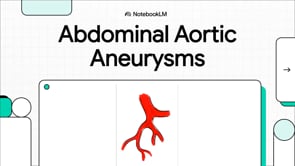Tässä laaja-alaisessa tutkimuksessa, johon osallistui 1 251 natalizumabia saanutta MS-potilasta, havaittiin, että 12,3 %:lla potilaista kehittyi lääkevastaisia vasta-aineita (ANA). Vasta-aineet olivat merkittävästi yleisempiä potilailla, joilla esiintyi infuusioon liittyviä reaktioita (21,6 %), verrattuna potilaisiin, joiden tauti paheni (10,8 %). Pysyvät vasta-aineet olivat todennäköisempiä potilailla, joilla oli aluksi korkeat vasta-ainepitoisuudet, ja vasta-aineiden muodostuminen oli yleisintä kuuden ensimmäisen infuusion aikana. Nämä havainnot korostavat vasta-aineiden seurannan tärkeyttä hoidon turvallisuuden ja tehon varmistamiseksi.
Natalizumabhoidon vasta-aineiden kehittymisen ymmärtäminen multippeliskleroosissa
Sisällysluettelo
- Johdanto: Miksi vasta-aineseuranta on tärkeää
- Tutkimusmenetelmät
- Tutkimustulokset
- Vasta-ainepitoisuudet ja pysyvyys
- Kliiniset merkitykset
- Tutkimuksen rajoitukset
- Potilaille suunnatut ohjeet
- Lähdeviittaus
Johdanto: Miksi vasta-aineseuranta on tärkeää
Natalizumabia (kauppanimi Tysabri) käytetään relapsivastaavan multippeliskleroosin (RRMS) hoidossa. Lääke vaikuttaa kohdentamalla immuunijärjestelmän solujen tiettyjä proteiineja, mikä estää niiden pääsyn keskushermostoon ja tulehdusreaktioiden syntymistä.
Joidenkin potilaiden immuunijärjestelmät kuitenkin tunnistavat natalizumabin vierasaineena ja tuottavat sitä vastaan vasta-aineita. Nämä anti-natalizumab-vasta-aineet (ANA) voivat heikentää lääkkeen tehoa ja lisätä haittavaikutusten riskiä, erityisesti infuusioon liittyviä reaktioita.
Tässä tutkimuksessa selvitettiin, kuinka usein vasta-aineita ilmenee arkipäiväisessä kliinisessä käytännössä ja miten ne liittyvät hoitoon liittyviin ongelmiin. Vasta-ainereaktion ymmärtäminen on ratkaisevan tärkeää, koska se auttaa lääkäreitä räätälöimään hoitoa ja välttämään tarpeettomia komplikaatioita.
Tutkimusmenetelmät
Tutkijat analysoivat 1251 multippeliskleroosipotilaan retrospektiivistä aineistoa vuosilta 2007–2020. Potilaat ohjattiin vasta-ainetestaukseen, koska he kärsivät joko sairauden pahenemisesta (MS-oireiden voimistuminen) tai infuusioon liittyvistä reaktioista.
Laboratoriossa käytettiin Biogenin tarjoamaa erikoistunutta ELISA-testiä natalizumab-vasta-aineiden havaitsemiseksi. Testi sisälsi sekä seulonta- että vahvistusvaiheen tarkkojen tulosten varmistamiseksi. Testausprosessi koostui useista vaiheista:
- Lautasten pinnoittaminen natalizumab-proteiinilla
- Potilaan seeruminäytteiden lisääminen laimennusliuoksessa
- Biotinyylatun natalizumabin käyttö vasta-aineiden havaitsemiseksi
- Värin kehittymisen mittaaminen vasta-aineiden osoittajana
Potilaat luokiteltiin vasta-ainetilanteen mukaan: negatiivinen (ei vasta-aineita), väliaikaisesti positiivinen (vasta-aineet hävisivät seurannassa) tai pysyvästi positiivinen (vasta-aineet pysyivät). Tutkijat analysoivat näiden ryhmien yhteyttä kliinisiin lopputulemiin.
Tutkimustulokset
1251 potilaasta 153 (12,3 %) kehitti anti-natalizumab-vasta-aineita jossain hoidon vaiheessa. Tämä osuus on korkeampi kuin alkuperäisissä kliinisissä tutkimuksissa, koska tähän tutkimukseen valikoitui potilaita, joilla oli hoitoon liittyviä ongelmia.
Potilaat jaettiin testaussyyn mukaan. 539 potilaasta (43,1 %), joilla oli sairauden pahenemista, vasta-aineita havaittiin 58:lla (10,8 %). 371 potilaasta (29,7 %), joilla oli infusioreaktioita, vasta-aineita oli 80:llä (21,6 %).
Ero oli tilastollisesti merkitsevä (p < 0,001). 78 potilasta (6,2 %) koki sekä sairauden pahenemisen että infusioreaktiot ja sisällytettiin molempiin ryhmiin.
Vasta-aineet ilmaantuivat useimmiten kuuden ensimmäisen infuusion aikana (21,1 % tapauksista). Infusioreaktioita kokeneilla potilailla vasta-aineita kehittyi useammin varhaisvaiheessa (38,3 %) kuin sairauden pahenemista kokeneilla (24,5 %), ero oli tilastollisesti merkitsevä (p = 0,022).
Vasta-ainepitoisuudet ja pysyvyys
184 potilaalla (14,7 %) tehtiin kaksi tai useampia vasta-ainetestejä. Heistä 58:lla (31,5 %) oli pysyviä vasta-aineita ja 13:lla (7,1 %) väliaikaisia vasta-aineita. Testien välinen mediaaniaika oli 42 päivää (vaihteluväli 2–169 päivää).
Potilaat jaettiin testaussyyn mukaan. 115 potilaasta, joilla oli sairauden pahenemista, 30:llä (26,1 %) oli pysyviä vasta-aineita ja 3:lla (2,6 %) väliaikaisia. 86 potilaasta, joilla oli infusioreaktioita, 37:llä (43,0 %) oli pysyviä vasta-aineita ja 8:lla (9,3 %) väliaikaisia.
Alkupitoisuus ennusti pysyvyyttä. 67 potilaasta, joilta oli saatavilla tietoja ensimmäisestä positiivisesta testistä, pysyvien vasta-aineiden tapauksissa alkuperäinen pitoisuus oli merkitsevästi useammin korkea (78,5 % vs. 45,5 % väliaikaisissa tapauksissa, p = 0,02). Tämä viittaa siihen, että varhainen pitoisuusmittaus voi auttaa ennustamaan pysyviä vasta-aineita.
Kliiniset merkitykset
Tutkimus tarjoaa arvokasta näyttöä potilaiden vastauksista natalizumabhoitoon. Vasta-aineiden kehittyminen liittyy merkittävästi hoitoon liittyviin komplikaatioihin, erityisesti infusioreaktioihin.
Infusioreaktioita kokeneilla potilailla yli 21 % testasi positiivisiksi vasta-aineille. Sairauden pahenemisen yhteydessä vasta-aineita havaittiin noin 11 %:lla potilaista, mikä edustaa silti tärkeää tekijää hoidon tehon heikkenemisessä.
Vasta-aineiden ilmaantuminen eroaa komplikaatiotyypeittäin. Infusioreaktiot ilmaantuvat usein varhain hoidossa (kuuden ensimmäisen infuusion aikana) ja liittyvät vahvemmin vasta-aineiden kehittymiseen. Vasta-aineisiin liittyvät sairauden pahenemiset voivat ilmaantua myöhemmin, mikä johtuu mahdollisesti siitä, että lääketehon heikkeneminen vaatii korkeampia vasta-ainepitoisuuksia.
Nämä löydökset korostavat vasta-aineseurannan tärkeyttä, erityisesti hoidon alkuvaiheessa, jolloin vasta-aineet todennäköisimmin kehittyvät. Varhainen havaitseminen voi ohjata hoitopäätöksiä ennen merkittävien komplikaatioiden ilmaantumista.
Tutkimuksen rajoitukset
Tutkimuksella on useita rajoituksia. Retrospektiivinen suunnittelu tarkoittaa, että aineisto perustui olemassa oleviin tietoihin eikä suunnitelmalliseen seurantaan.
Vasta-ainetestausten ajoitus vaihteli potilaittain, mikä vaikeutti tarkkaa ajoituksen määrittämistä. Osa potilaista testattiin pian oireiden ilmaantumisen jälkeen, toisilla viiveet olivat pidempiä.
Tutkimuksesta puuttui yksityiskohtainen kliininen tieto potilaiden tilasta, hoidoista ja muista vasta-ainekehittymiseen vaikuttavista tekijöistä. Vertailuryhmää potilaita ilman komplikaatioita ei ollut saatavilla.
Lopuksi tutkijat eivät pystyneet seuraamaan, miten vasta-ainetulokset vaikuttivat lääkäreiden hoitopäätöksiin eivätkä siten analysoineet testauksen vaikutusta potilaiden lopputulemiin.
Potilaille suunnatut ohjeet
Natalizumabhoitoa saavien potilaiden tulisi huomioida seuraavat seikat:
- Seuraa varhaisia oireita: Ole tarkkana kuuden ensimmäisen infuusion aikana, sillä vasta-aineet kehittyvät useimmiten tänä aikana
- Ilmoita oireet välittömästi: Kerro terveydenhuollon ammattilaisille heti infusioreaktioista (punottavuus, kutina, hengitysvaikeudet) tai sairauden pahenemisesta
- Ymmärrä vasta-ainetestauksen merkitys: Jos koet hoitoon liittyviä ongelmia, lääkäri voi suositella vasta-ainetestausta syyn selvittämiseksi
- Tulkitse tulokset oikein: Yksittäinen positiivinen testi ei välttämättä vaadi hoidon keskeyttämistä – pysyvät vasta-aineet (vahvistetut toisella testillä) ohjaavat päätöksentekoa
- Keskustele vaihtoehdoista: Jos sinulla kehittyy pysyviä vasta-aineita, neurologisi voi auttaa sinua löytämään sopivamman hoidon
Muista, että useimmilla potilailla vasta-aineita ei kehity (87,7 % tutkimuksen potilaista), ja natalizumab on edelleen tärkeä hoitovaihtoehto monille MS-potilaille.
Lähdeviittaus
Alkuperäinen artikkeli: Natalizumabin immunogeenisuuden arviointi potilailla, joilla on infuusioon liittyviä tapahtumia tai sairauden pahenemista
Tekijät: Nicolás Lundahl Ciano-Petersen, Pablo Aliaga-Gaspar, Isaac Hurtado-Guerrero, Virginia Reyes, José Luis Rodriguez-Bada, Eva Rodriguez-Traver, Ana Alonso, Isabel Brichette-Mieg, Laura Leyva Fernández, Pedro Serrano-Castro, and Begoña Oliver-Martos
Julkaisu: Frontiers in Immunology, 22. elokuuta 2023
DOI: 10.3389/fimmu.2023.1242508
Tämä potilasystävällinen artikkeli perustuu vertaisarvioituun tutkimukseen ja säilyttää alkuperäisen tutkimuksen keskeiset löydökset, tilastot ja johtopäätökset samalla tehdessään tiedon saavutettavaksi potilaille.




